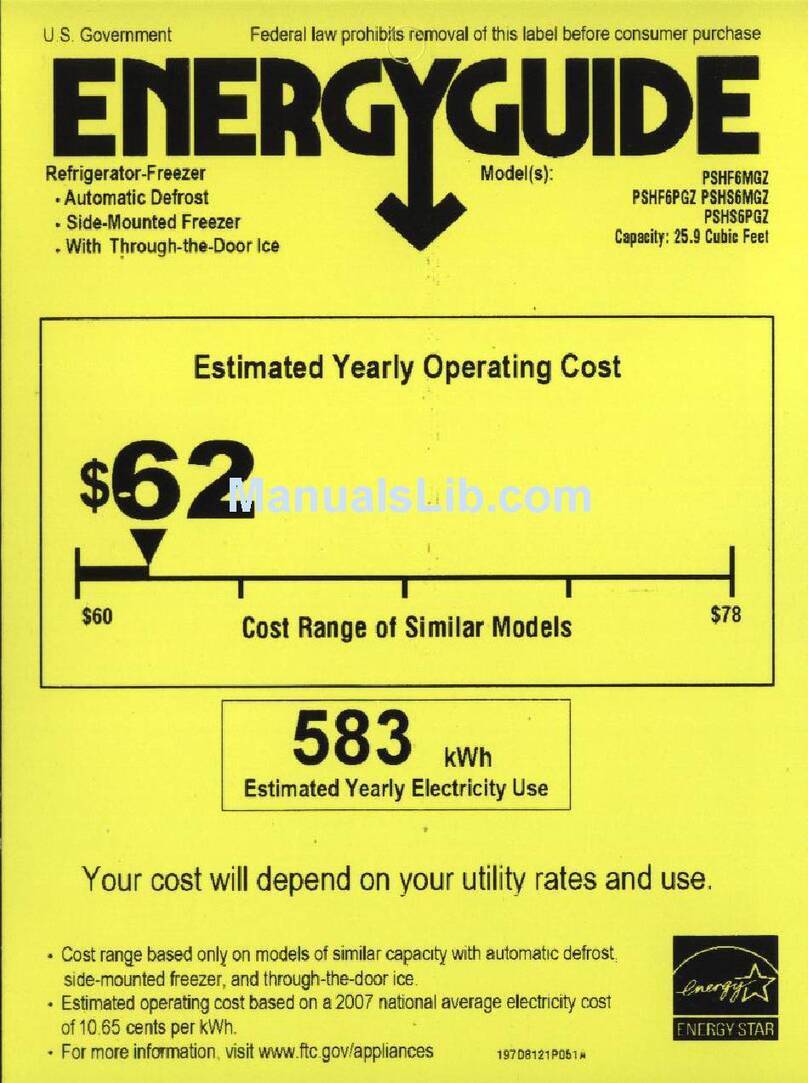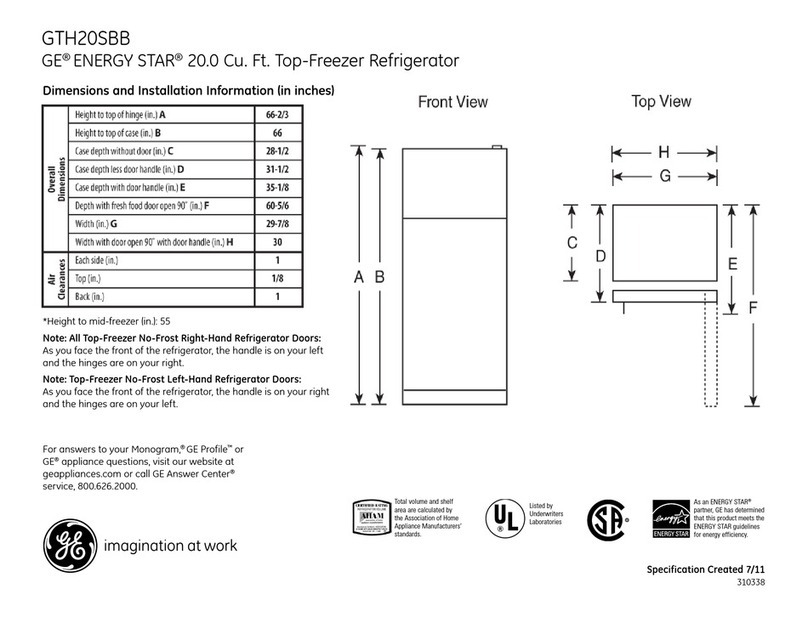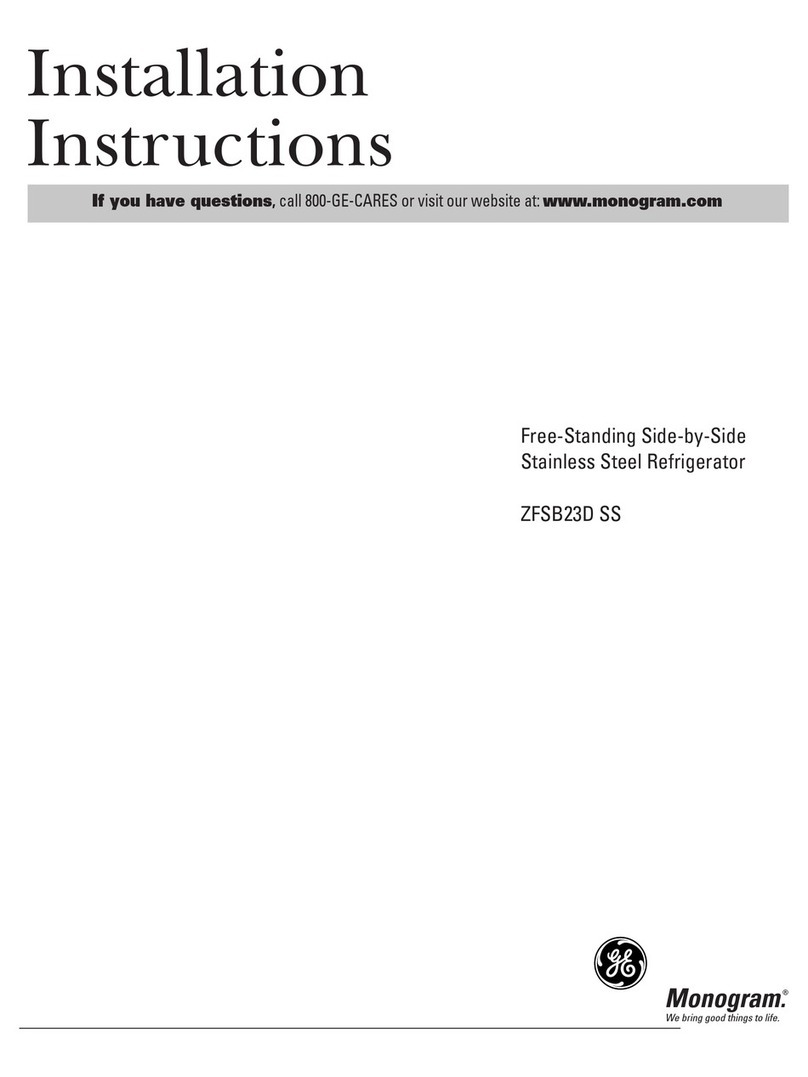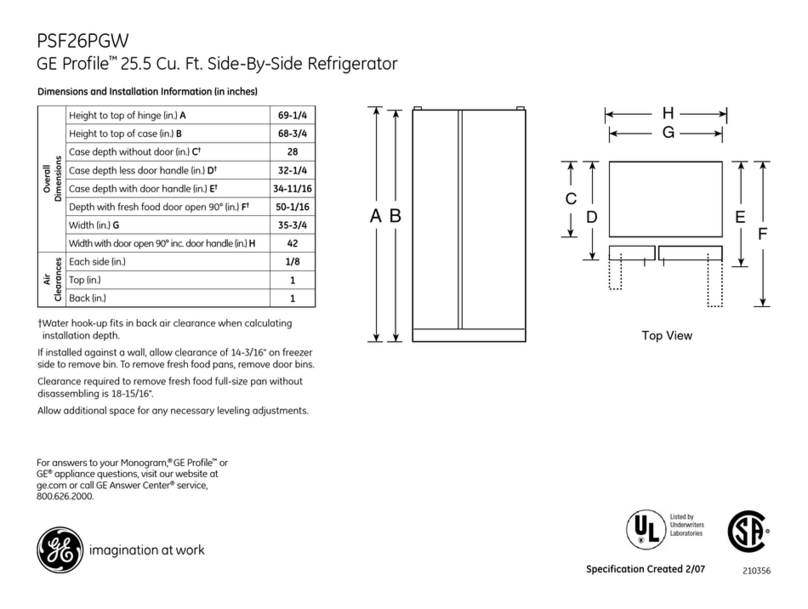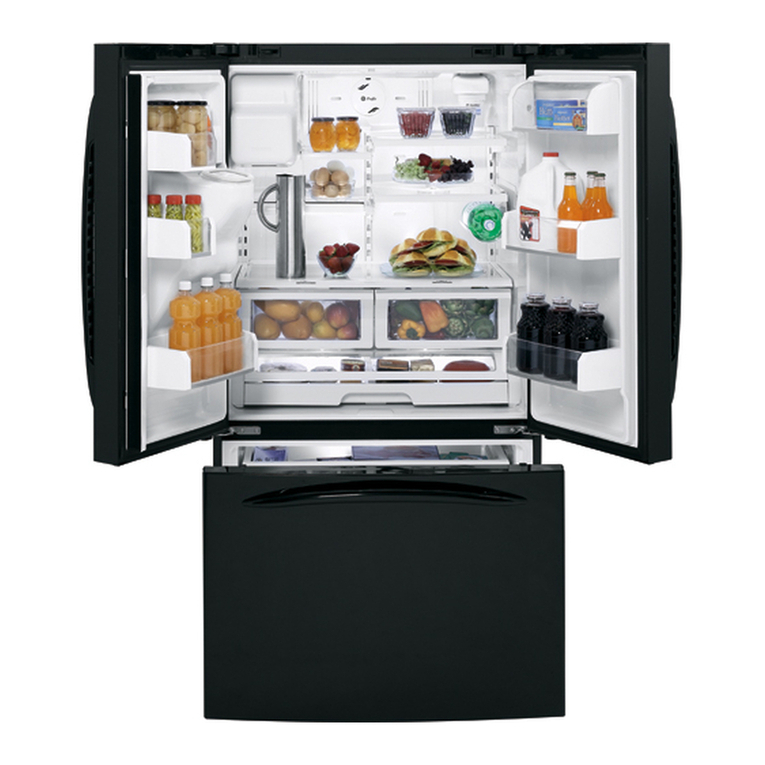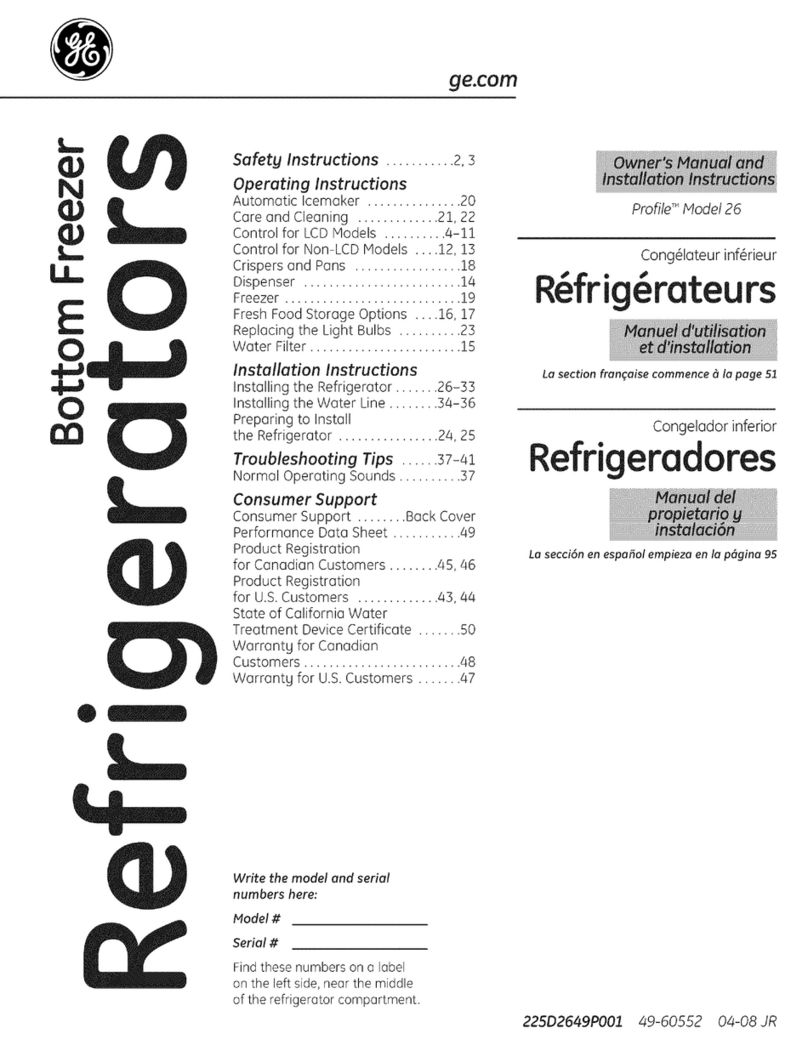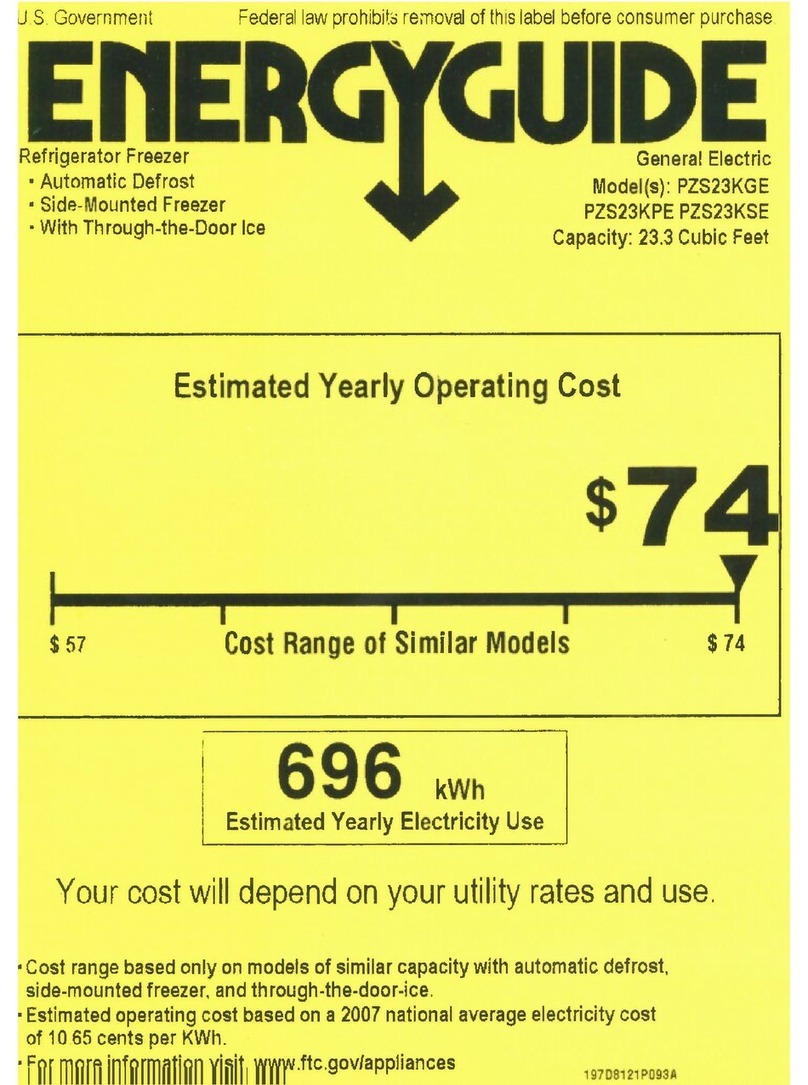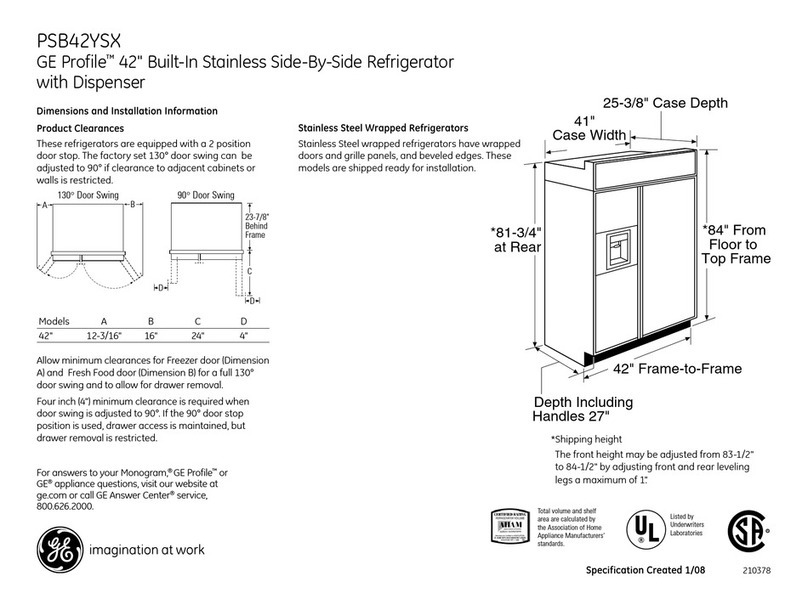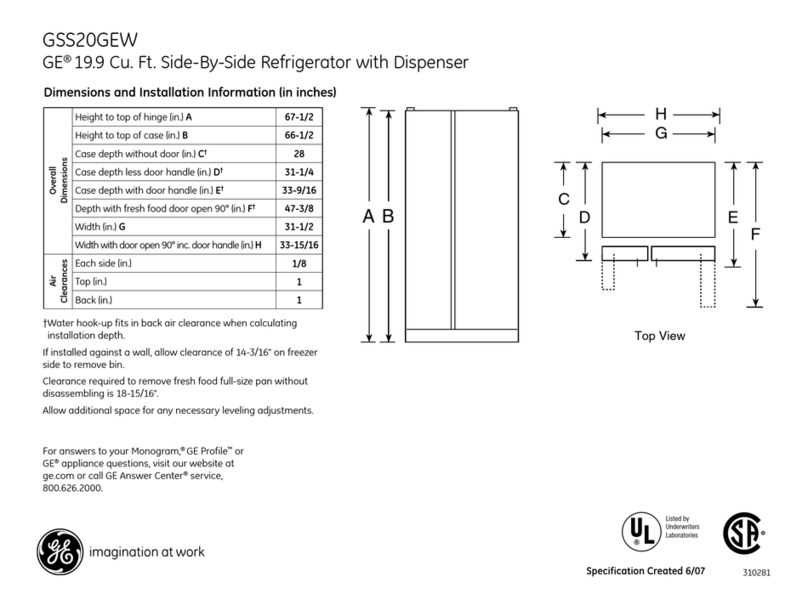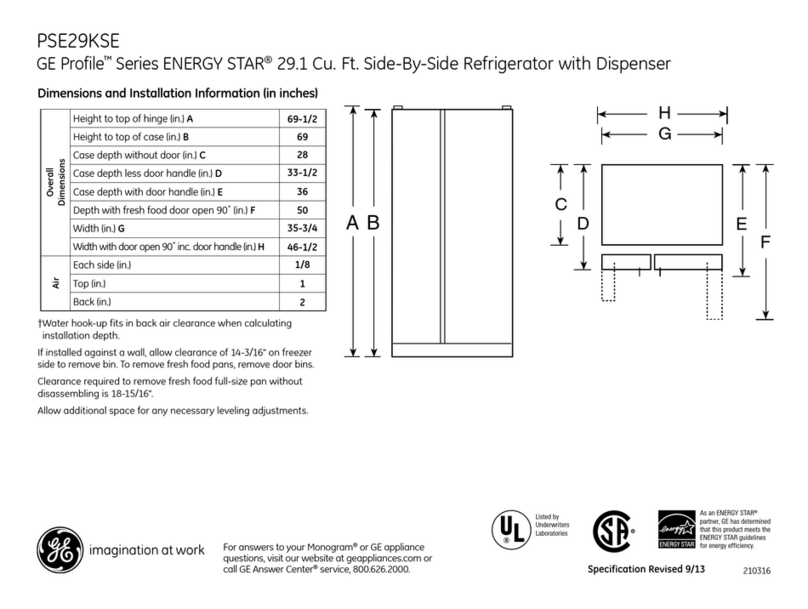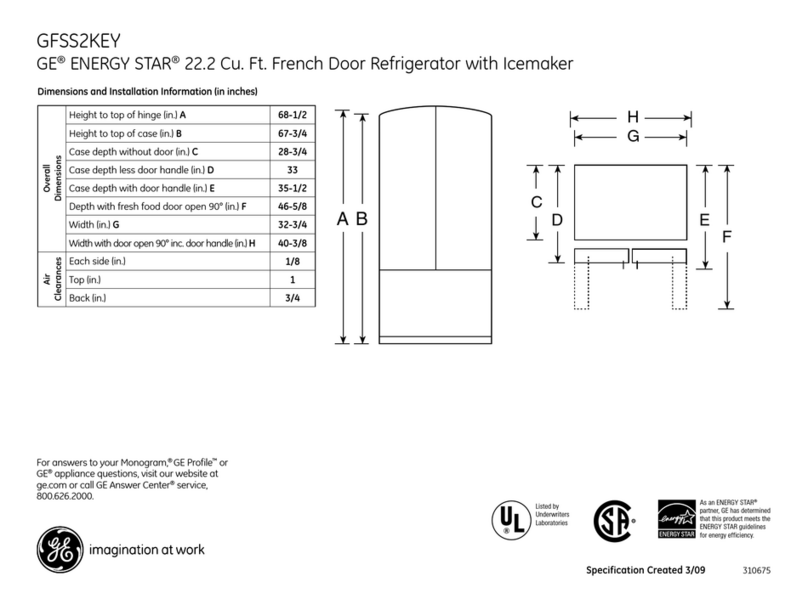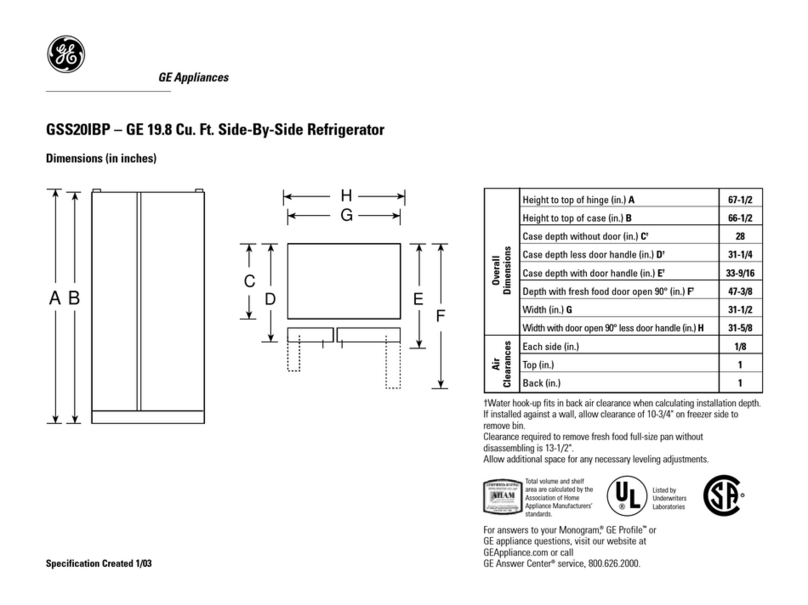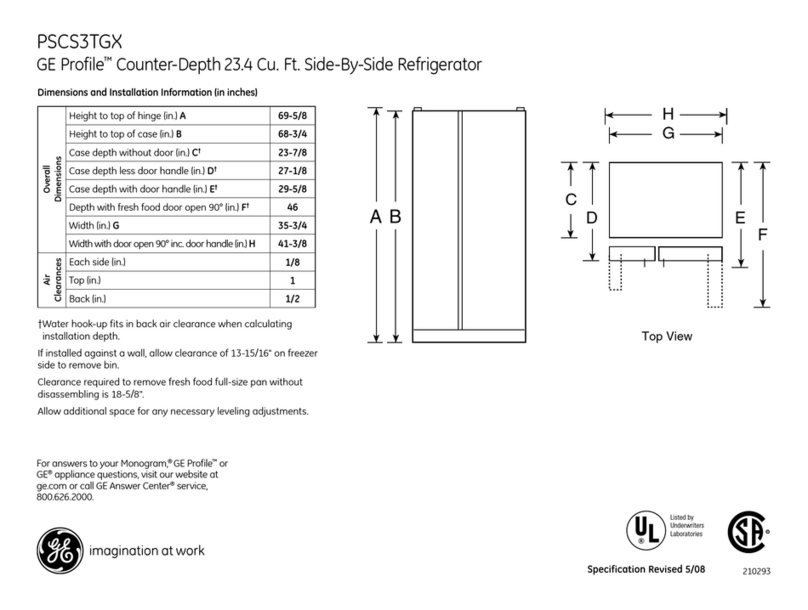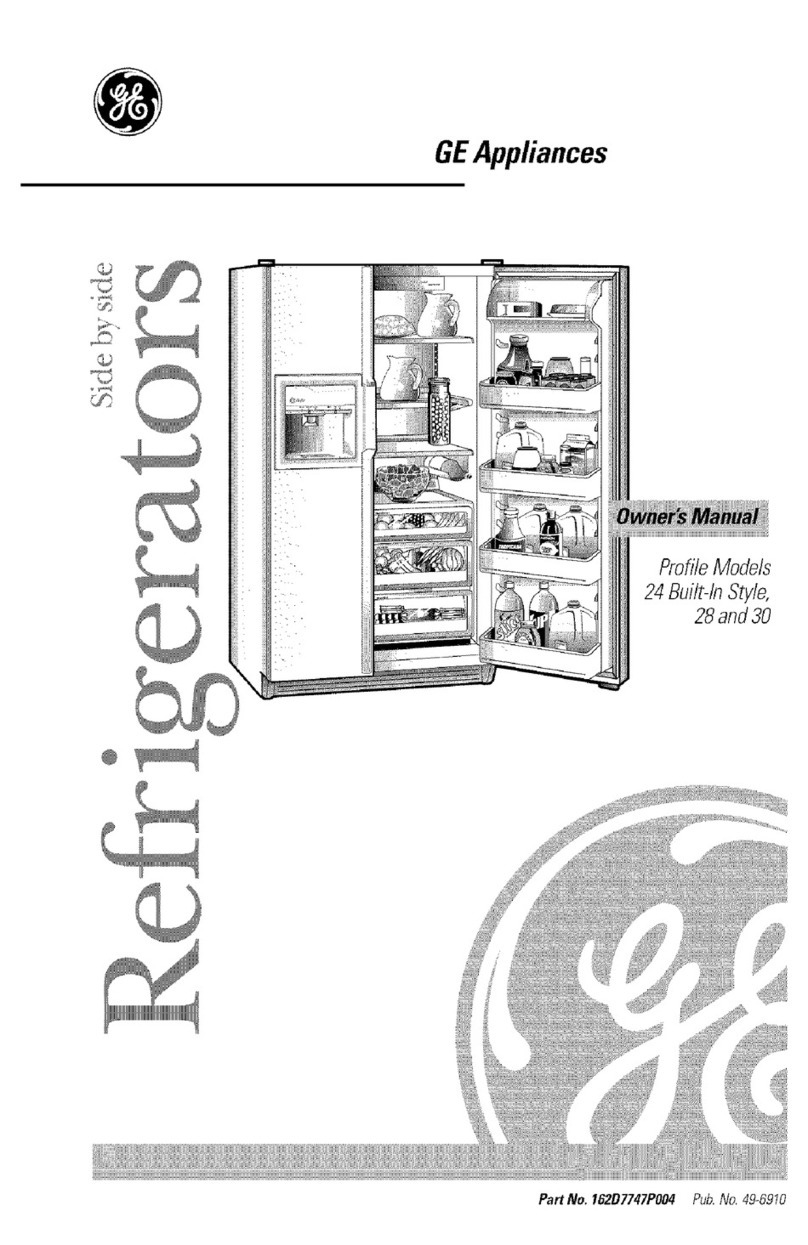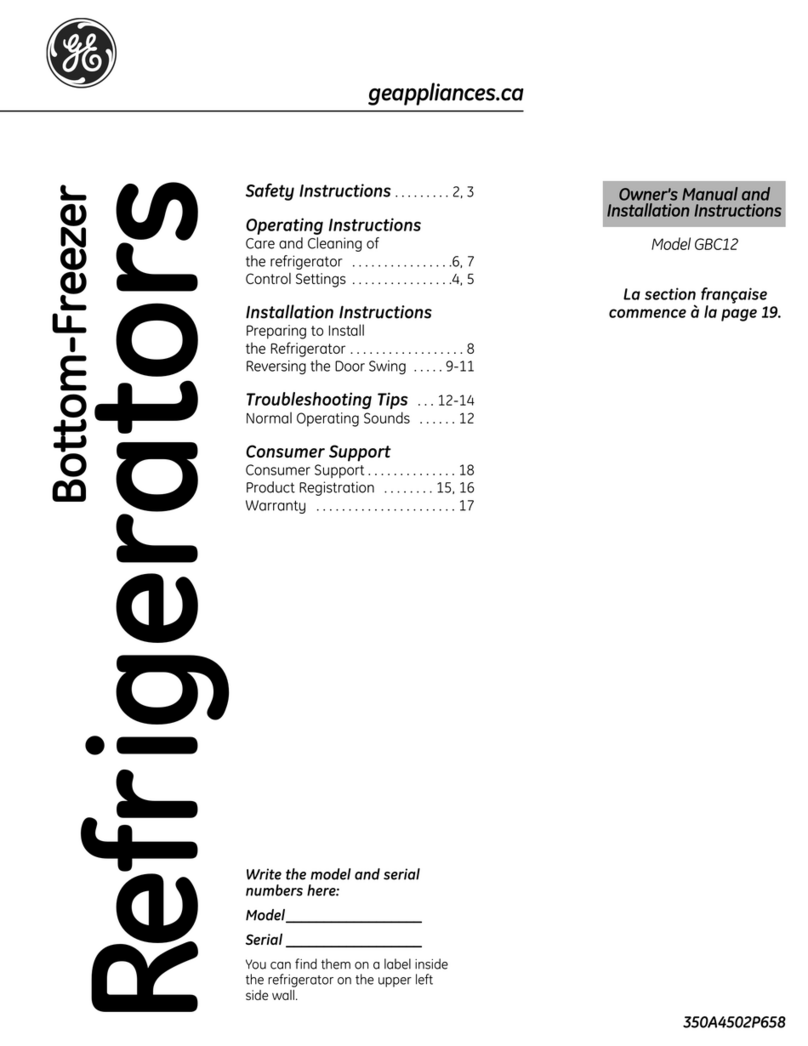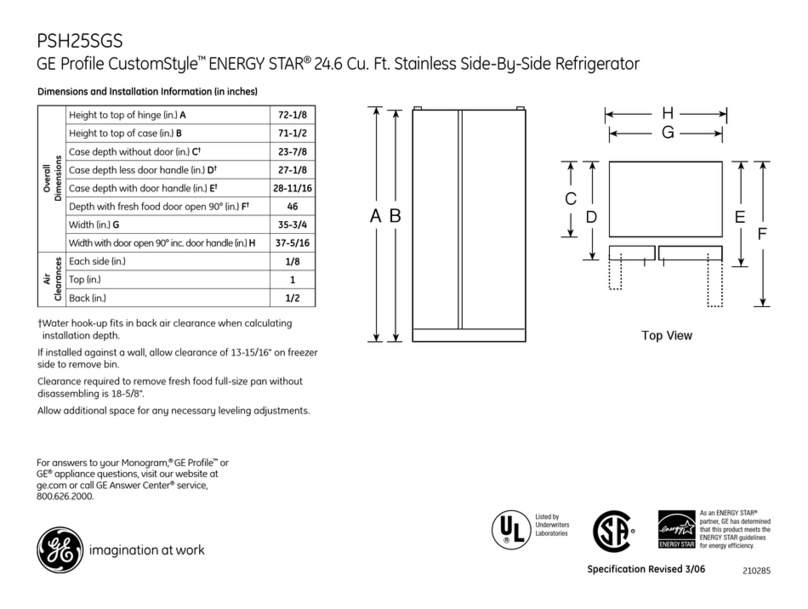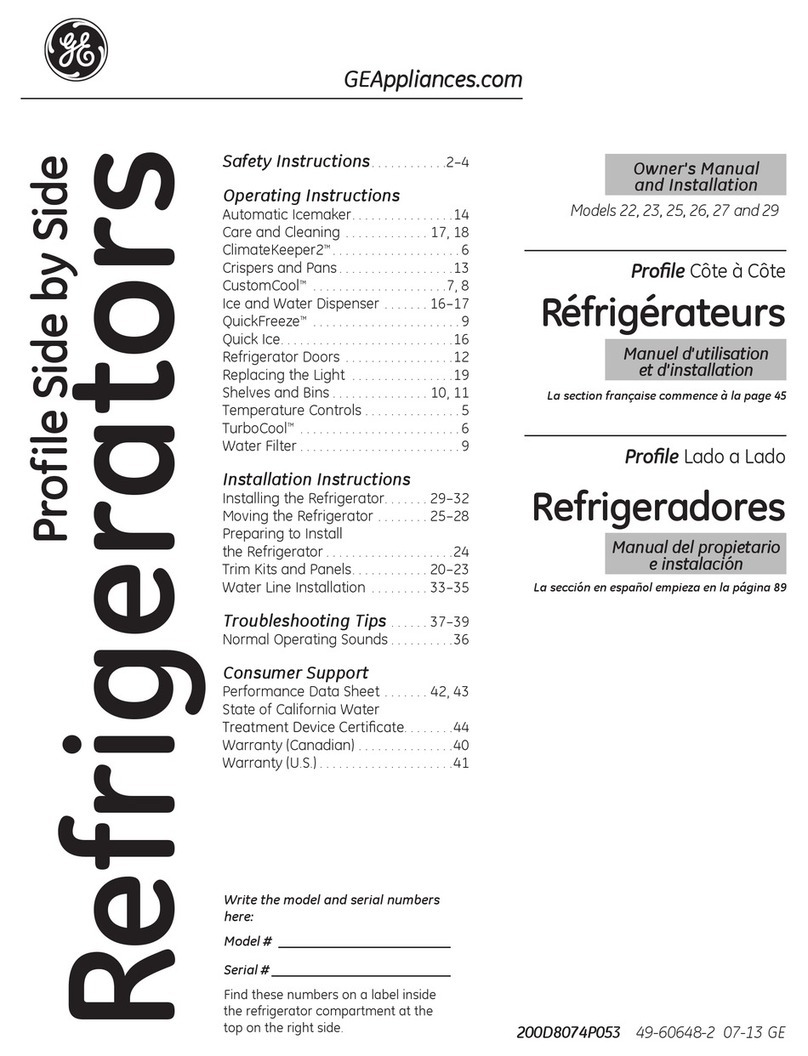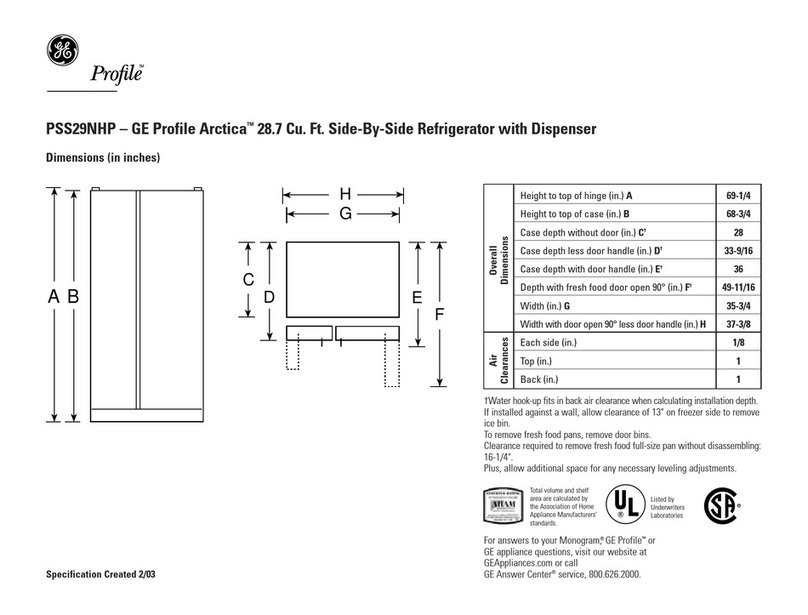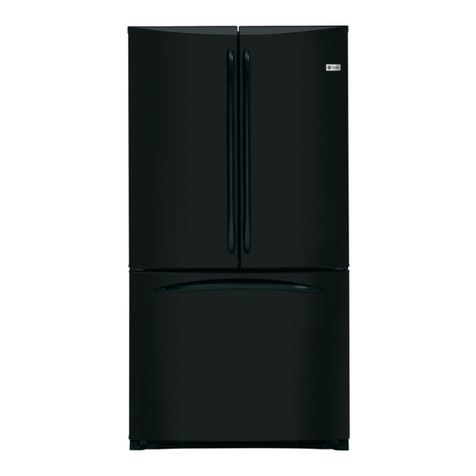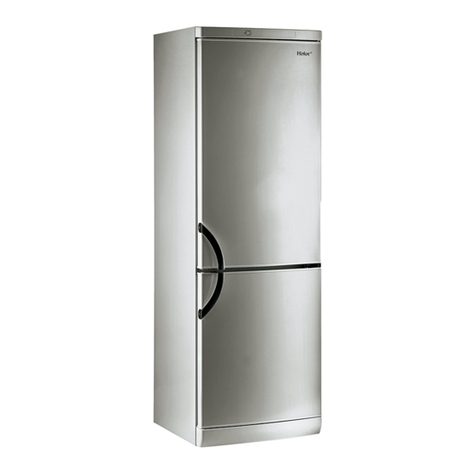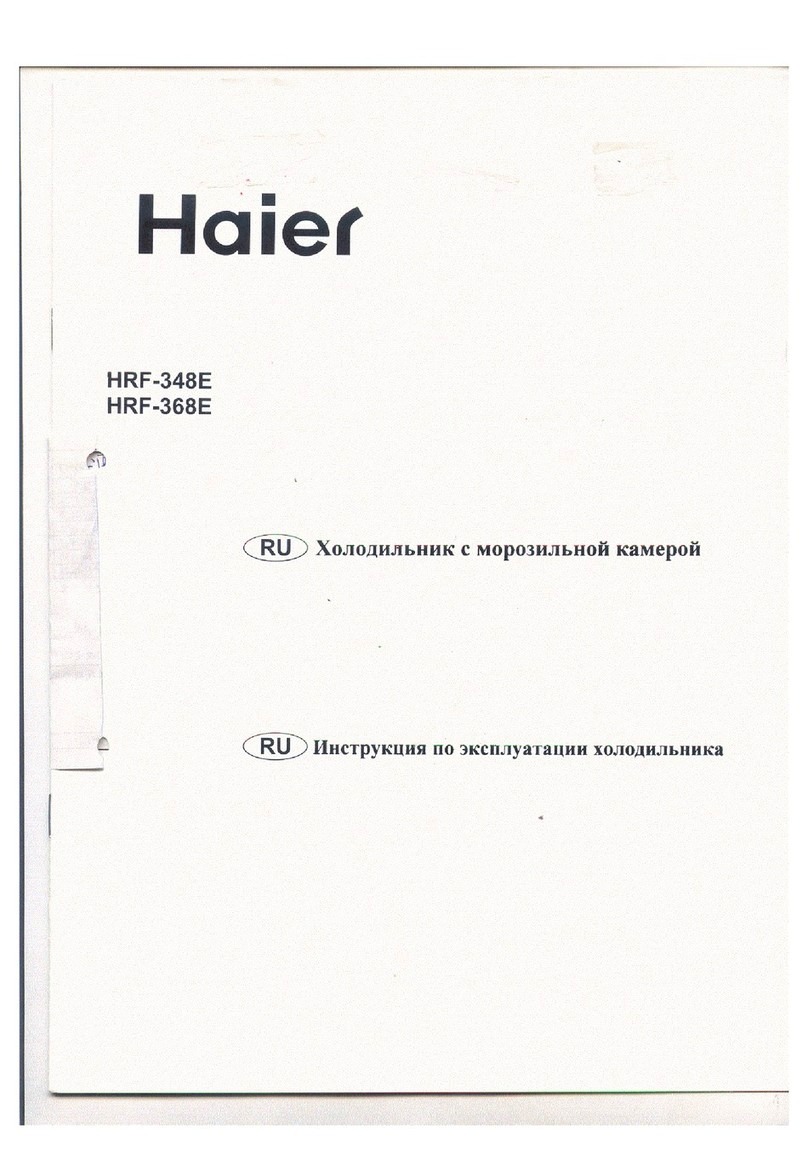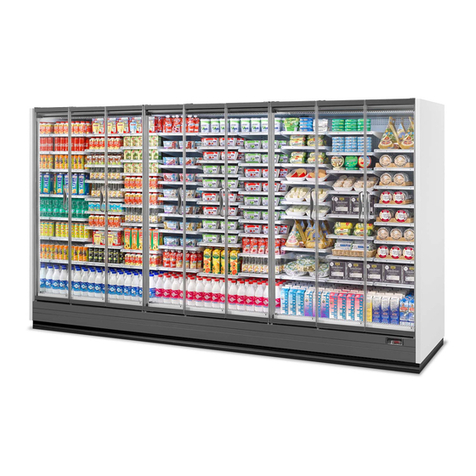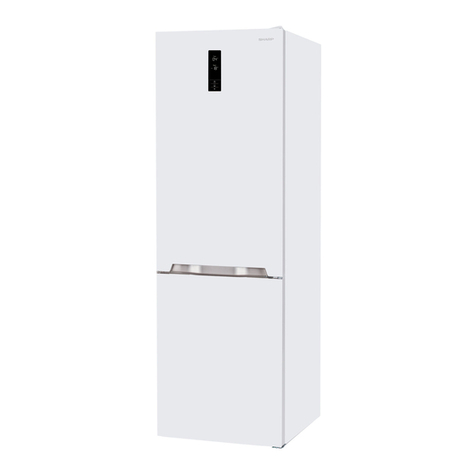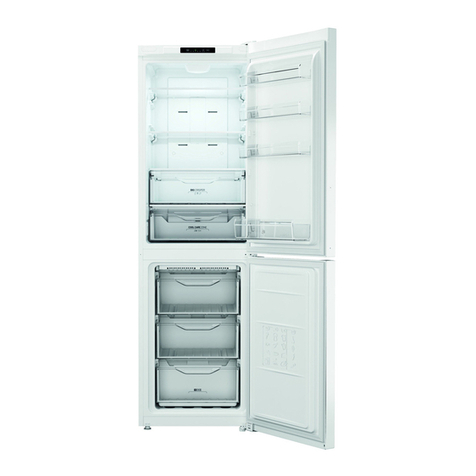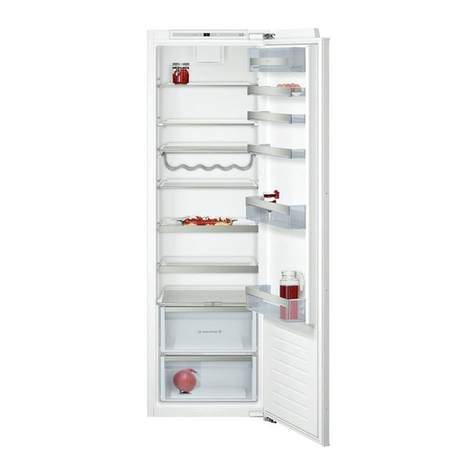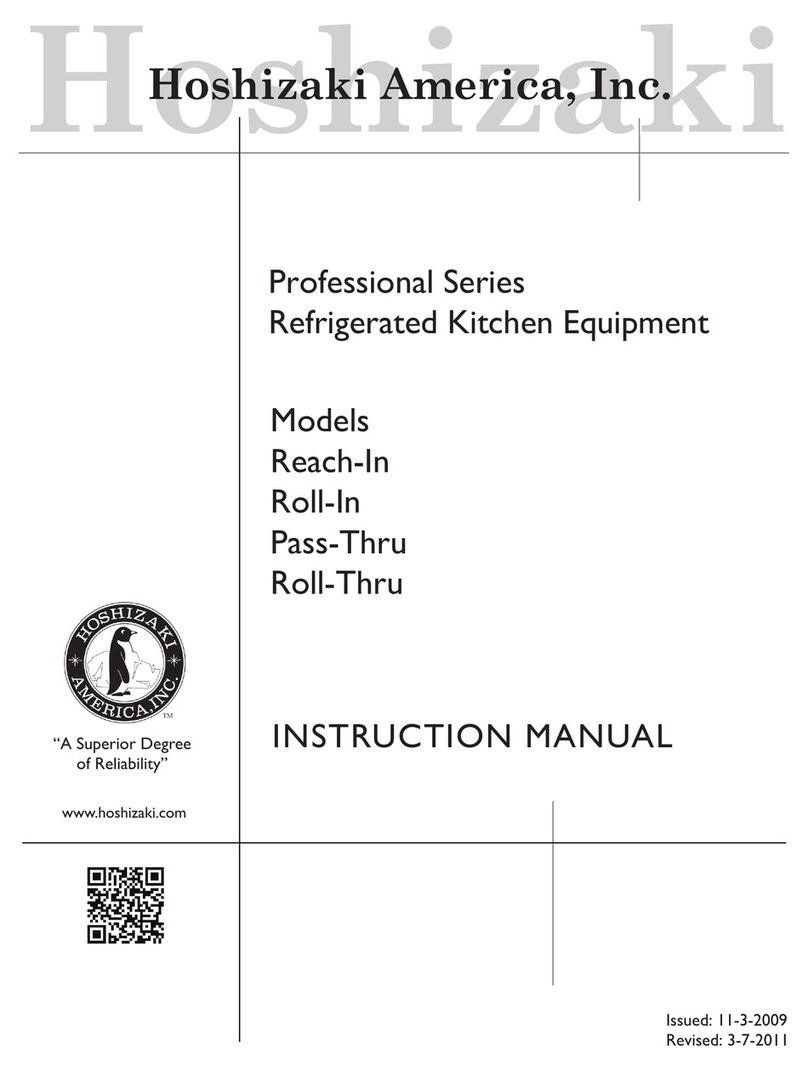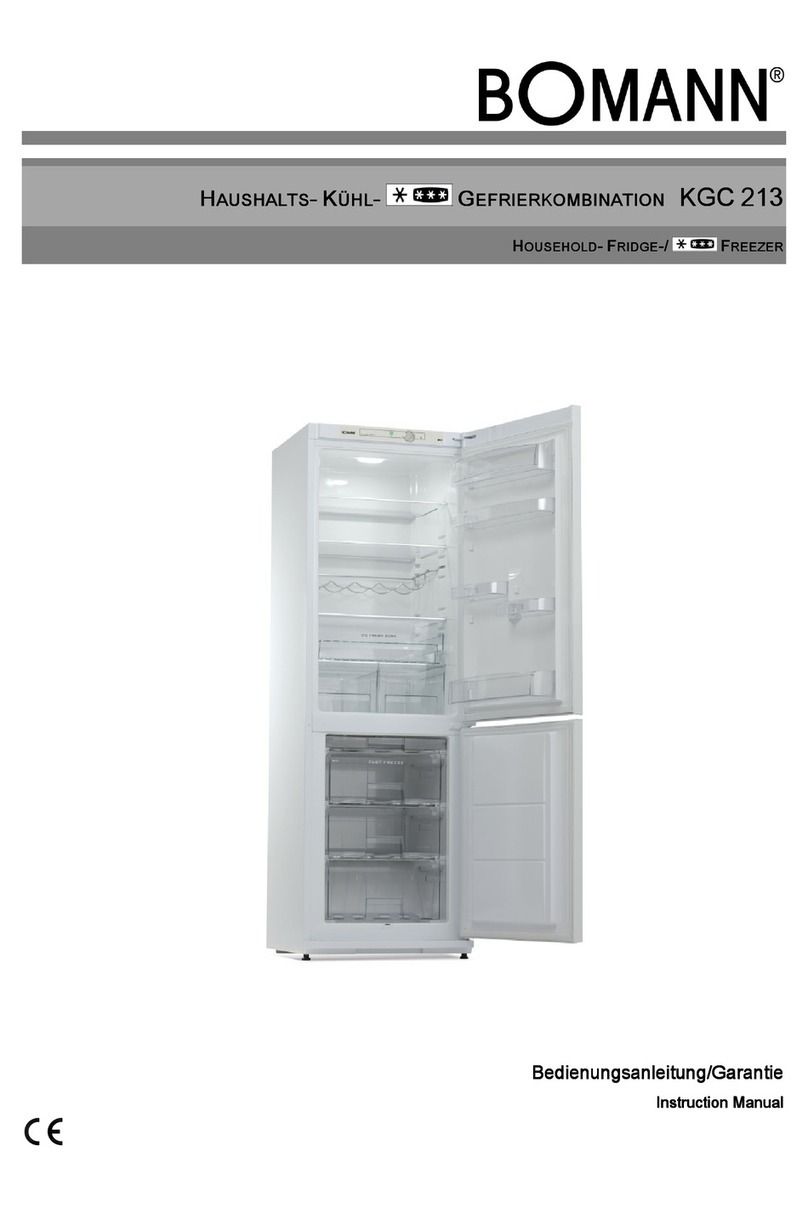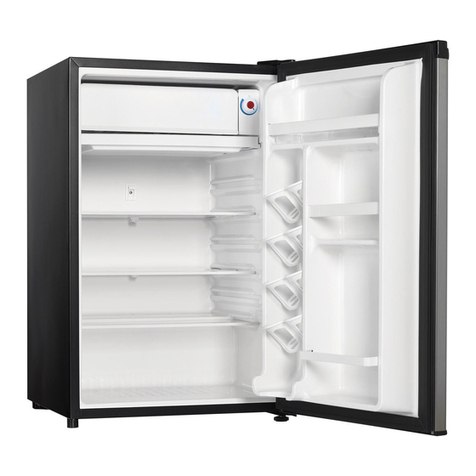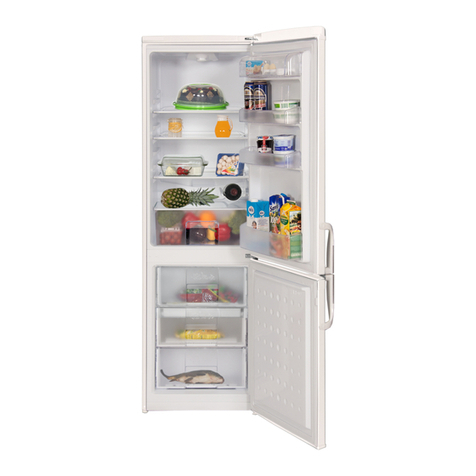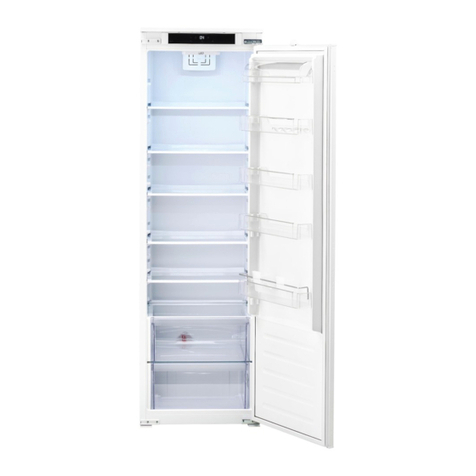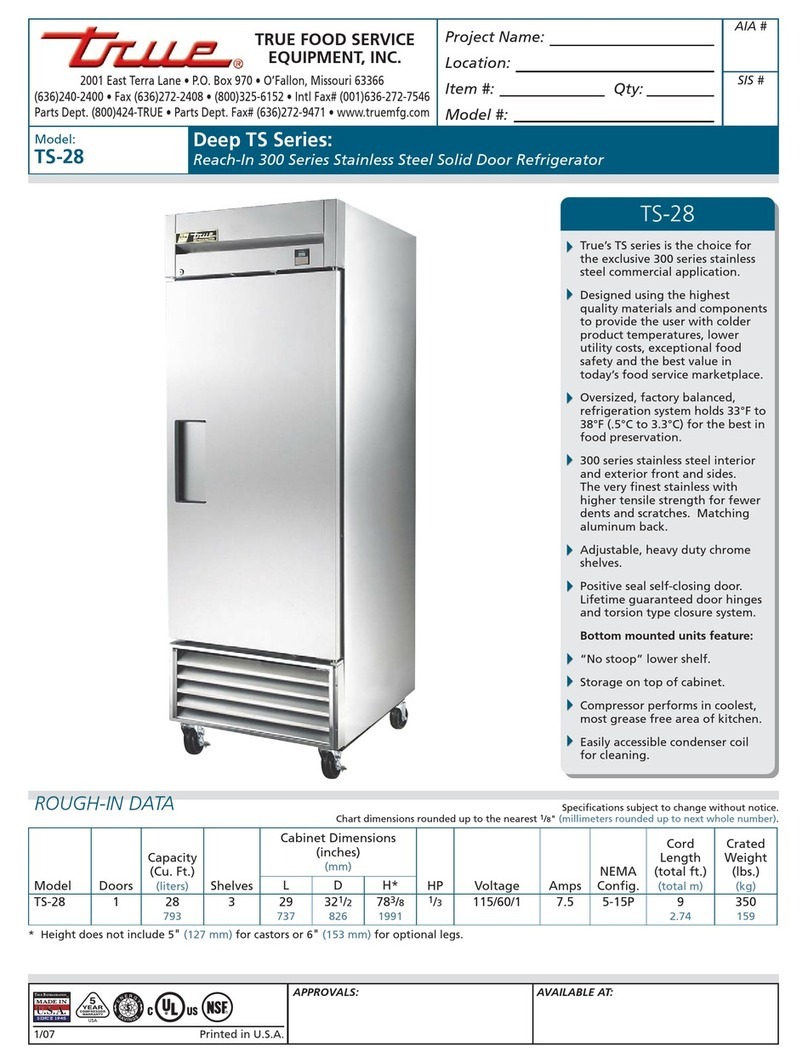Care and Cleaning
Cleaning—Outside
The door handles and trim can
be cleaned with acloth dampened
with asolution ofmild liquid
dishwashing detergent and water.
Dry with asoftcloth. Don’tuse
waxon the door handles andtrim.
Keep the finish clean. Wipewith
aclean cloth lightly dampened
with kitchen appliance waxor mild
liquid dishwashing detergent. Dry
and polish with aclean, softcloth.
Do not wipe the refrigerator with
asoiled dishwashing cloth or wet
towel. These mayleavearesidue
that can erode the paint. Do not use
scouring pads, powdered cleaners,
bleach or cleaners containingbleach
because these products can scratch
and weakenthe paint finish.
Protect the paint finish. The finish
on the outside ofthe refrigerator is a
high quality, baked-on paint finish.
With proper care, itwill staynew-
looking and rust-free foryears.
Apply acoat ofkitchen/appliance
waxwhen the refrigerator is new
and then at least twice ayear.
Appliance Polish Wax&Cleaner
(Cat. No. WR97X216)is available
from GE Appliance Parts Marts.
Cleaning-Inside
Inside the fresh food and frozen
food storage compartments
should be cleaned at least once a
year. Unplug the refrigerator before
cleaning. Ifthis is not practical,
wring excessmoisture out ofsponge
or cloth when cleaning around
switches, lights or controls.
Use warm water and baking soda
solution—about atablespoon of
baking soda to aquart ofwater.
This both cleans and neutralizes
odors. Rinse thoroughly with water
and wipe dry.
Other parts ofthe refrigerator—
including door gasket, vegetable
drawer, icetraysand all plastic
parts-can be cleaned the same way.
Do not use cleansing powdersor
other abrasive cleaners.
Tohelp prevent odors, leave
anopen box ofbaking soda inthe
rear ofthe refrigerator, on the top
shelf. Change the box everythree
months. An open box ofbaking
soda in the freezer will absorb
stale freezerodors.
Do not wash any plastic parts
from your refrigerator in your
automatic dishwasher.
Beneath Refrigerator
In the refrigeration process, it is
normal that heat be expelled in the
area under the refrigerator. Some
synthetic floor coverings will
discolor at these normal and safe
operating temperatures. Yourfloor
covering supplier should be
consulted if you object to this
discoloration.
Behind Refrigerator
Care should be taken in moving
your refrigerator awayfrom the
wall. All types of floor coverings
can be darnaged, particularly
cushioned coverings and those
with embossed surfaces.
When yougo
onvacation
For extended vacations or
absences, shut off power to
refrigerator, turn the temperature
control to “O;’ clean interior with
baking soda solution of one
tablespoon of soda to one quart
of water. Wipe dry. Toprevent
odors, leave open box of soda in
refrigerator. Leavedoor open.
For shorter vacations, remove
perishable foods and leave control
at regular setting. However, if
room temperature is expected to
drop below 60”F., follow same
instructions as for extended
vacations.
When youmove
/. .
Disconnect power cord from wall
receptacle and remove all food.
Follow defrosting instructions (see
page 6), then clean and dry the ----,
interior. .-
Secure all loose items such as
shelves and storage pans by taping
them securely in place to prevent
damage.
Be sure refrigerator stays in upright
position only during actual moving
and in van. Refrigerator must be
secured invanto prevent movement.
Protect outside of refrigerator
with blanket.
‘L/
8
